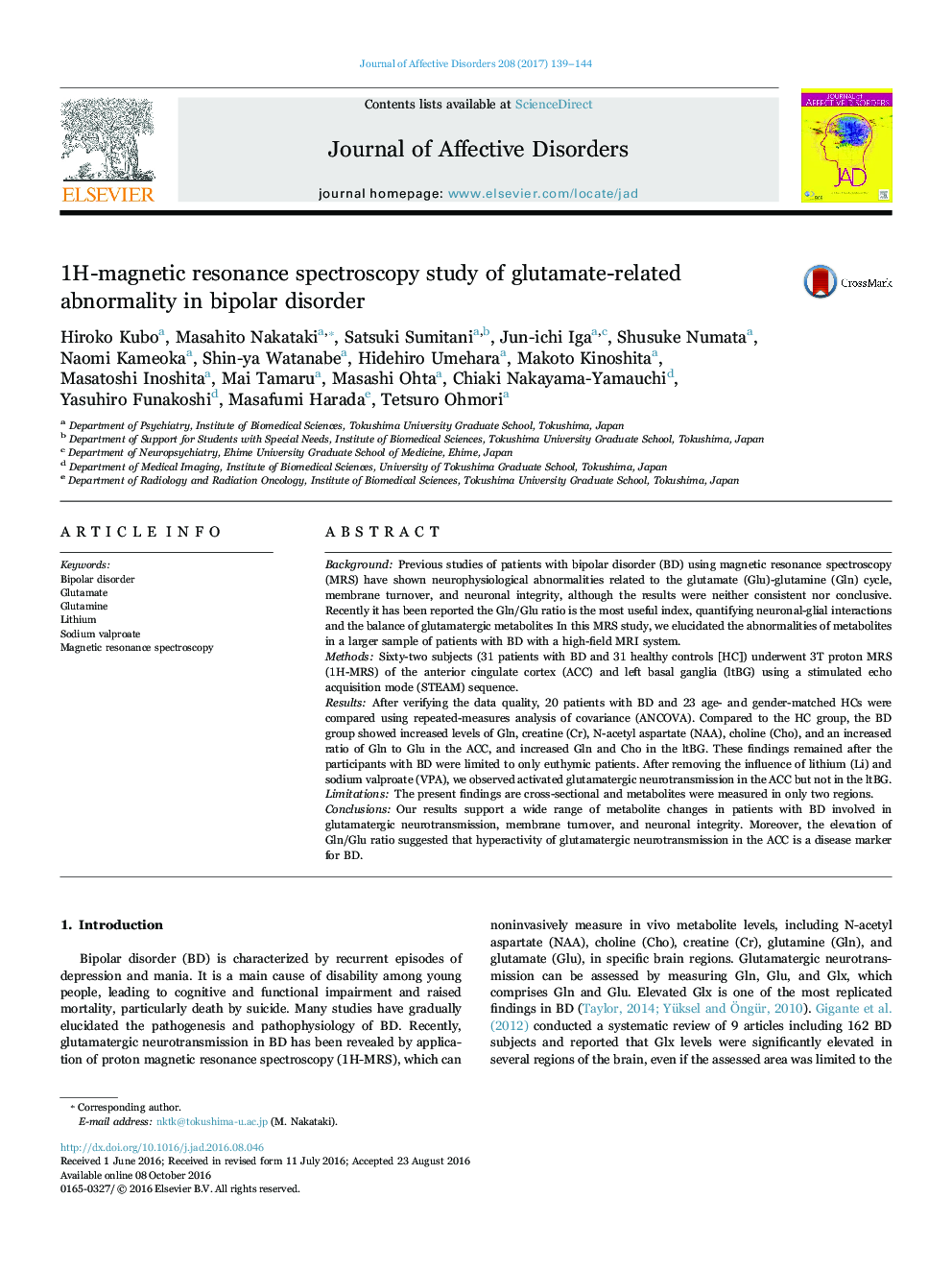| کد مقاله | کد نشریه | سال انتشار | مقاله انگلیسی | نسخه تمام متن |
|---|---|---|---|---|
| 5722069 | 1608117 | 2017 | 6 صفحه PDF | دانلود رایگان |
- We compared brain metabolite levels of BD patients and healthy controls using MRS.
- BD had elevated Glu, Gln, Gln/Glu, NAA, Cr& Cho in the ACC, Gln & Cho in the ltBG.
- These findings remained after participants of BD were limited to those with euthymia.
- Thus, activated glutamatergic neurotransmissionmay relate to BD's pathophysiology.
- By removing the effects of Li and VPA, elevated Gln survived only in the ACC.
BackgroundPrevious studies of patients with bipolar disorder (BD) using magnetic resonance spectroscopy (MRS) have shown neurophysiological abnormalities related to the glutamate (Glu)-glutamine (Gln) cycle, membrane turnover, and neuronal integrity, although the results were neither consistent nor conclusive. Recently it has been reported the Gln/Glu ratio is the most useful index, quantifying neuronal-glial interactions and the balance of glutamatergic metabolites In this MRS study, we elucidated the abnormalities of metabolites in a larger sample of patients with BD with a high-field MRI system.MethodsSixty-two subjects (31 patients with BD and 31 healthy controls [HC]) underwent 3T proton MRS (1H-MRS) of the anterior cingulate cortex (ACC) and left basal ganglia (ltBG) using a stimulated echo acquisition mode (STEAM) sequence.ResultsAfter verifying the data quality, 20 patients with BD and 23 age- and gender-matched HCs were compared using repeated-measures analysis of covariance (ANCOVA). Compared to the HC group, the BD group showed increased levels of Gln, creatine (Cr), N-acetyl aspartate (NAA), choline (Cho), and an increased ratio of Gln to Glu in the ACC, and increased Gln and Cho in the ltBG. These findings remained after the participants with BD were limited to only euthymic patients. After removing the influence of lithium (Li) and sodium valproate (VPA), we observed activated glutamatergic neurotransmission in the ACC but not in the ltBG.LimitationsThe present findings are cross-sectional and metabolites were measured in only two regions.ConclusionsOur results support a wide range of metabolite changes in patients with BD involved in glutamatergic neurotransmission, membrane turnover, and neuronal integrity. Moreover, the elevation of Gln/Glu ratio suggested that hyperactivity of glutamatergic neurotransmission in the ACC is a disease marker for BD.
Journal: Journal of Affective Disorders - Volume 208, 15 January 2017, Pages 139-144
